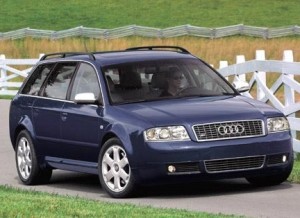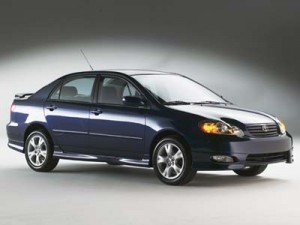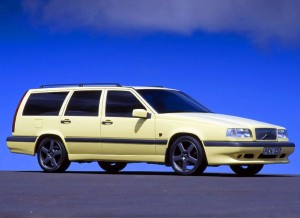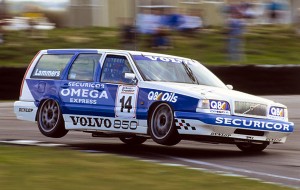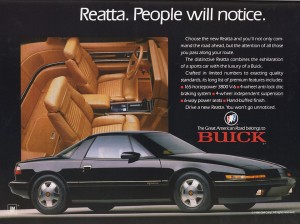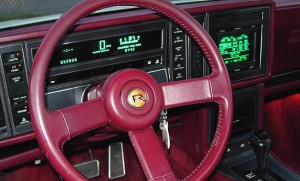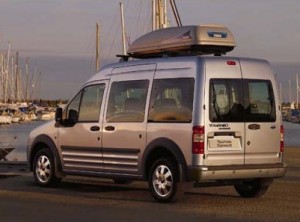2002-2003 Audi S6 Avant: It Exists
Posted by Doug DeMuro in It Exists on | 10 comments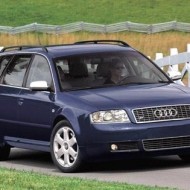
All car enthusiasts love fast Audis. A love for fast Audis may actually be a prerequisite to becoming a car enthusiast, along with complaining about the increase of modern technology in cars. This dates back to the days when they replaced levers with a steering wheel and people said: I’ll never buy one of them automobiles without a lever! Now, if you’ll excuse me, I have to go pan for gold.
In the States, we’ve been fortunate enough to receive a few of the coolest fast Audis ever. The 2003 RS6, for instance, was a tremendous car for the 11 days per year when it was working properly. Same goes for the initial S8. And of course the original Audi Quattro, which was possibly the coolest boxy car until Ford came out with that EcoBoost Flex that has like 360 horsepower.
But my favorite fast Audi – aside from, of course, the Europe-only RS2 – was the 2002-2003 S6 Avant.
Most people don’t realize it, but the “C5” S6 came only as a station wagon. That’s pretty cool, considering the aversion most Americans have with wagons – and, thus, the aversion automakers have to sending them our way.
But Audi was nice enough to give us the S6 Avant, which had meaty wheels, some subtle bodywork revisions, and – most importantly – a 340-horsepower 4.2-liter V8. That was a big deal in 2002, because the most powerful A6 sedan was the A6 4.2, which had only 300 horses. Of course, the following year, Audi debuted the RS6, which was so powerful that it needed a new transmission every eight weeks.
Unfortunately, the transmission issue also dogged the S6, as did various other reliability problems. Still, these days it’s an absolute bargain – and the only car that joins my love of fast wagons with my love of fast Audis.
Toyota Corolla XRS: It Exists
Posted by Doug DeMuro in It Exists on | 21 comments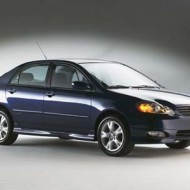
I once had a Lotus. That was pretty cool, except when people would talk to me about it. People who didn’t know cars would always ask things like: “How much does it cost?” and “How fast does it go?” Of course, they were always disappointed by the answers.
Car people, on the other hand, would inevitably say: “Nice Toyota Celica!” This is about as funny as when people hear sirens and feel the urge to announce: “They’re coming for you.”
What most car people don’t know is that the Celica wasn’t the only Toyota that shared its engine with the Lotus Elise. For one, there was the Toyota Matrix XRS, which was a hotted-up version of the Matrix that makes for a very cool used car. That was mechanically twinned with the Pontiac Vibe GT. If you don’t know the car, think Matrix, but attractive.
Beyond the Matrix and the Celica, one more Toyota shared its engine with the Elise: the Corolla.
Yes, most people don’t realize it, but Toyota offered a high-performance version of its Corolla in 2005 and 2006. Dubbed the “Corolla XRS,” it excited practically no one, except for me, who loves weird special editions with a little extra power.
And extra power it had: the Corolla XRS made 170 horses, which was 40 more than the base model. And, like all cars with this engine, it only came with a manual transmission.
Of course, Toyota didn’t consider the biggest issue, which is quite simply that no one wants a sporty Corolla. The car didn’t sell, and it wasn’t long before it was gone for good. Nonetheless, the Corolla XRS exists.
Volvo 850 T-5R: It Exists
Posted by Doug DeMuro in It Exists on | 22 comments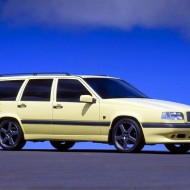
My first car was a 1996 Volvo 850 Turbo. I know what you’re thinking: I’m sorry. But actually, I loved the car. It was my parents who hated it, since they were on the hook for most of its repair bills, which were both constant and massive.
During my tenure owning the 850 Turbo, I always lusted after the model’s slightly more exciting stablemate: the 850 T-5R. This thing was cool. They only made it in 1995, and it only came in yellow or black (plus an incredibly small handful in green). Plus, it had those really neat wheels that looked like they constantly had brake dust.
Beyond the looks, the T-5R was cool because Volvo entered a race version in the British Touring Car Championship. And beyond that, Volvo entered the station wagon, which is just wildly cool for anyone who loves fast wagons.
On paper, the T-5R was actually kind of crappy. Every single US model was an automatic. (And a four-speed, to boot.) While my 850 Turbo’s horsepower rating was 222, the T-5R was only 240. And the front bumper was so low that you scraped it on virtually every parking curb, ramp, and normal street in New England.
But as the ultimate performance Volvo of its day, it still appeals to a few people who clearly have no idea about the engine problems they’ll soon experience. That includes me, even though I do know about the pitfalls – which is why, to this day, I go on SwedeSpeed every few weeks to see if any new T-5Rs were listed in my area.
In 1996, Volvo came out with the 850R, which was made in much larger numbers and came in many colors, none of which were yellow. But my dream was always the T-5R. If only I could get my parents pay for it to stay running.
Buick Reatta: It Exists
Posted by Doug DeMuro in It Exists on | 8 comments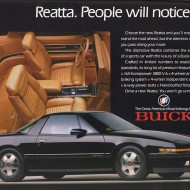
Have you ever looked at Buick’s current lineup and said: “I wish there was a two-seater?” Neither have I. Neither has anyone. Except, of course, for someone at General Motors, who, in the late 1980s, dreamed up the Reatta.
Yes, the Buick Reatta exists, despite the best efforts of car buyers everywhere.
The Reatta went on sale in 1988 using GM’s 3.8-liter V6, probably because it wasn’t possible not to use GM’s 3.8-liter V6 in the 1980s. Or the 1990s, for that matter. It had two seats, two doors, and an absolutely bizarre “Electronic Control Center,” which was a touchscreen system that looks like what they probably have on the DMV computers.
All Reattas had four-speed automatics and all had about 165 horsepower, which – let’s be honest – is kind of weak for the “halo car” Buick had intended the Reatta to be. The car was handbuilt, which I’m pretty sure no one actually cared about, and came with a Buick pen, which I’m definitely sure no one actually cared about.
For 1990, a convertible model debuted, which managed to somehow record even worse sales than the coupe. The entire project was shuttered after around 22,000 sales (which somehow included 2,400 convertibles), and the Reatta ended its run after the 1991 model year. It would be the only non-rebadged Buick for the next 20 years. Maybe that’s a good thing.
Ford Transit Connect Passenger Van: It Exists
Posted by Doug DeMuro in It Exists on | 7 comments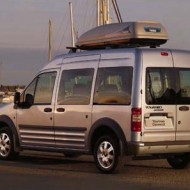
It Exists: Ford Transit Connect Passenger Van
Most people know that Ford imports the Transit Connect from Turkey as a passenger van, rips out the seats and windows at the port, and throws them away. Most people also know that this is due to a bit of legal minutiae called the “Chicken Tax.” This has been well-covered elsewhere, but the gist is as follows.
In the 1960s, we made a lot of chickens. And VW made a lot of flatbed pickup truck versions of its flower power-style Bus. The Germans got mad that we were exporting so many chickens, so they started taxing them. Because we all know “an eye for an eye” is the only diplomatic policy that really works, the US retaliated by taxing light trucks. This put American farmers out of the German chicken game and foreign automakers out of the light truck game.
Fast-forward to now, and Ford – a domestic brand – is the only automaker who now imports a light truck: the Transit Connect. Everyone else builds them in house right here in the non-union US of A, except for the Honda Ridgeline, which comes from hell.
Anyway, to avoid the Chicken Tax, Ford imports the Transit Connect as a passenger vehicle (with seats) and rips them out at the port, which makes it a commercial vehicle. No tax, and everyone is happy – especially the port workers who probably have home theatres furnished with Ford Transit Connect rear bench seats.
But did you know that, once in a rare while, they leave the seats and windows in?
That’s right. There’s a passenger version of the Ford Transit Connect, and there has been since it debuted in 2010. No one buys this vehicle, but it exists for reasons unknown to anyone. It’s not really a minivan competitor, since it only has five seats. Yet it’s sort of a minivan competitor because it’s heinously expensive: a decently-equipped Transit Connect – including the $65 key fob option – runs close to $27,000 with shipping. Add rear seat DVD players and a (surprisingly attractive) roof cargo basket, and you’re pushing $30k.
At that price, I think it’s better for everyone if they take the seats out.
